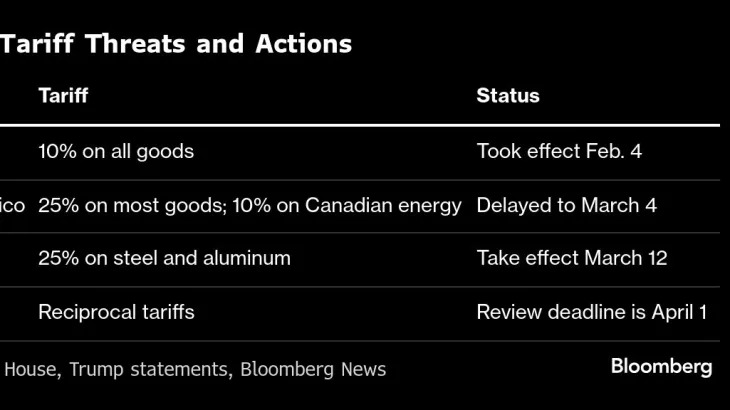Over the last decade, cryptocurrency has gone from an obscure asset to a wildly popular investment before falling significantly amid increasing interest rates and then rising again. Cryptocurrencies are a form of digital currency secured through cryptography and computer networks. These currencies are not overseen by traditional central institutions, like a government or bank, and transactions are performed while maintaining the semi-anonymity of buyers and sellers.
How cryptocurrencies work can sometimes be complex. Below is an easy-to-follow guide on the most important things to know about digital currencies and new developments in the crypto market.
Learn about cryptocurrency
Types of cryptocurrency
|
Token type |
Best used for/purpose |
Example of this type |
|---|---|---|
|
Equity tokens |
Represent equity in the underlying asset, usually the stock of an actual company or equity in a property. Terms are recorded on the blockchain. Very similar to owning traditional stocks, with the main difference being registration on a blockchain versus a database or paper certificate as is the case with traditional stock. Voting rights are also issued with these tokens through the blockchain. |
Tesla and PayPal are just two examples of companies that can be bought as regular shares and as tokenized stocks through the blockchain. |
|
Utility tokens |
Utility tokens are used to raise funds for new cryptocurrency projects. Utility tokens usually serve a specific purpose for their developer, often to raise capital but can also provide access to products or services. Not considered ownership of an asset like an equity token. |
Basic Attention Token (BAT) is used for payments in publishing systems. Golem (GNT) offers a way for users to rent computing power systems. |
|
Intrinsic tokens |
Also called “native” or “built-in” tokens, these tokens are digital forms of currency and have intrinsic value only insofar as the market values them. They do not represent anything, but simply exist as currency. |
Bitcoin (BTC) and Ethereum (ETH) are two of the most well-known intrinsic tokens. |
|
Asset-backed tokens |
Asset-backed tokens are the digital equivalent of IOUs. These tokens are backed by an underlying asset, something physical like gold, paper money, art or gemstones. Users can claim the underlying asset from a specific issuer by sending the token to the issuer. |
Any real, physical asset can be tokenized into an asset-backed token. Often, commodities like gold, crude oil and soybeans are used. |
Crypto market rise and fall
Cryptocurrency statistics: Investors and demographics
|
Ethnicity / Race |
Percent of total crypto ownership |
Percent of U.S. adult population |
|---|---|---|
|
White |
62% |
69% |
|
Hispanic |
24% |
16% |
|
Black or African American |
8% |
10% |
|
Asian |
6% |
5% |
|
Generation |
Percent of total crypto ownership |
Percent of U.S. adult population |
|---|---|---|
|
Gen Z (born 1997-2012) |
13% |
11% |
|
Millennials (born 1981-1996) |
57% |
30% |
|
Gen X (born 1965-1980) |
20% |
27% |
|
Baby Boomers (born 1946-1964) |
10% |
32% |
Cryptocurrency’s environmental impact
Although cryptocurrencies have created a new, alternative method of payment, the production of cryptocurrency has been mired in controversy because of the energy required to produce it.
Bitcoin and other cryptocurrencies are “mined” on decentralized computer networks that act much like a large ledger. This ledger tracks each transaction of cryptocurrency, and computers throughout the network verify and process each transaction through a blockchain database.
Think of it like a long receipt that records every transaction in a cryptocurrency. As transactions are processed and verified, new bitcoins are created, or mined . Mining is the process of adding another entry onto the receipt, or another block to the chain.
This process requires high-powered and sophisticated computers — and a lot of electricity. Bitcoin alone used an estimated 154 terawatt-hours of electricity annualized as of September 2024 — more than Ukraine and Malaysia — according to the Cambridge Bitcoin Electricity Consumption Index.
Bankrate insights
Bitcoin mining consumes so much electricity that it accounts for an estimated 0.60 percent of the entire world’s electricity consumption as of September 2024, according to the Cambridge index. Mining for Bitcoin alone is estimated to create an estimated 78.3 million metric tons of carbon dioxide emissions per year, comparable to those created by Romania, according to the Cambridge index.
Other key facts show the environmental impact of cryptocurrency:
Crypto taxes and economic statistics
When cryptocurrencies were first created, it was nearly impossible for government tax agencies to track them. The hallmark of blockchain transactions is anonymity, meaning one could not prove the identity of the buyer or the seller.
In 2014, the IRS stated that cryptocurrency was to be treated as property for federal income tax purposes. Although the agency itself has not released official estimates yet, an analysis from Barclays Bank figures that the IRS loses an estimated $50 billion per year from taxes that should be paid on cryptocurrency assets.
Buying and holding cryptocurrency is not considered a taxable event. You can buy and hold the crypto for as long as you want, though you do have to disclose that on your tax return, but once you decide to sell (or realize the gain or loss) you will need to report the amount of profit or loss from the sale. Spending cryptocurrency may also create a tax liability, depending on the price you paid and the value realized in goods and services.
Is crypto the future of money?
The popularity of cryptocurrency has grown in recent years as access to crypto has become easier. The asset is still incredibly volatile, and in 2022 rising interest rates caused selloffs in Bitcoin, as skittish investors offloaded speculative assets. Bitcoin recovered somewhat in 2023, and reached a new high in March 2024.
The volatility of major cryptocurrencies such as Bitcoin makes them difficult, if not impossible, to use as currencies. Major currencies need to be mostly stable in order to act as a medium of exchange. So the ideas that cryptocurrencies can be both trading vehicles for profit and functional currencies to transact are at odds with each other.
Governments around the world, including the United States, have also started to analyze how to regulate cryptocurrency. In 2022, U.S. President Joe Biden signed an executive order calling for a broad review of digital assets, including cryptocurrencies. Federal agencies are reviewing digital currencies and assessing the risk they pose to overall financial stability, among other considerations.
Bankrate insights
The difficulties of tax reporting and the controversy surrounding crypto have resulted in the digital asset being entirely banned in more than a dozen countries including Egypt, Saudi Arabia and China. China, which used to account for the majority of the world’s Bitcoin mining, has now outlawed cryptocurrencies altogether as well.
So far, El Salvador and the Central African Republic accept crypto as legal tender, although both countries have had significant problems with its implementation.
Cryptocurrency, although available as a method of payment for some companies scattered throughout the world, has not made the official leap as a widely available currency. Several major companies already accept cryptocurrency as a form of currency or payment, but the list is relatively limited:
However, many other companies have introduced the ability to pay with cryptocurrency but then rescinded it when customers failed to actually use it. For example, Microsoft used to accept Bitcoin to pay for Xbox store credits, but has since discontinued that.
Cryptocurrency FAQ
— Georgina Tzanetos wrote a previous version of this story.





